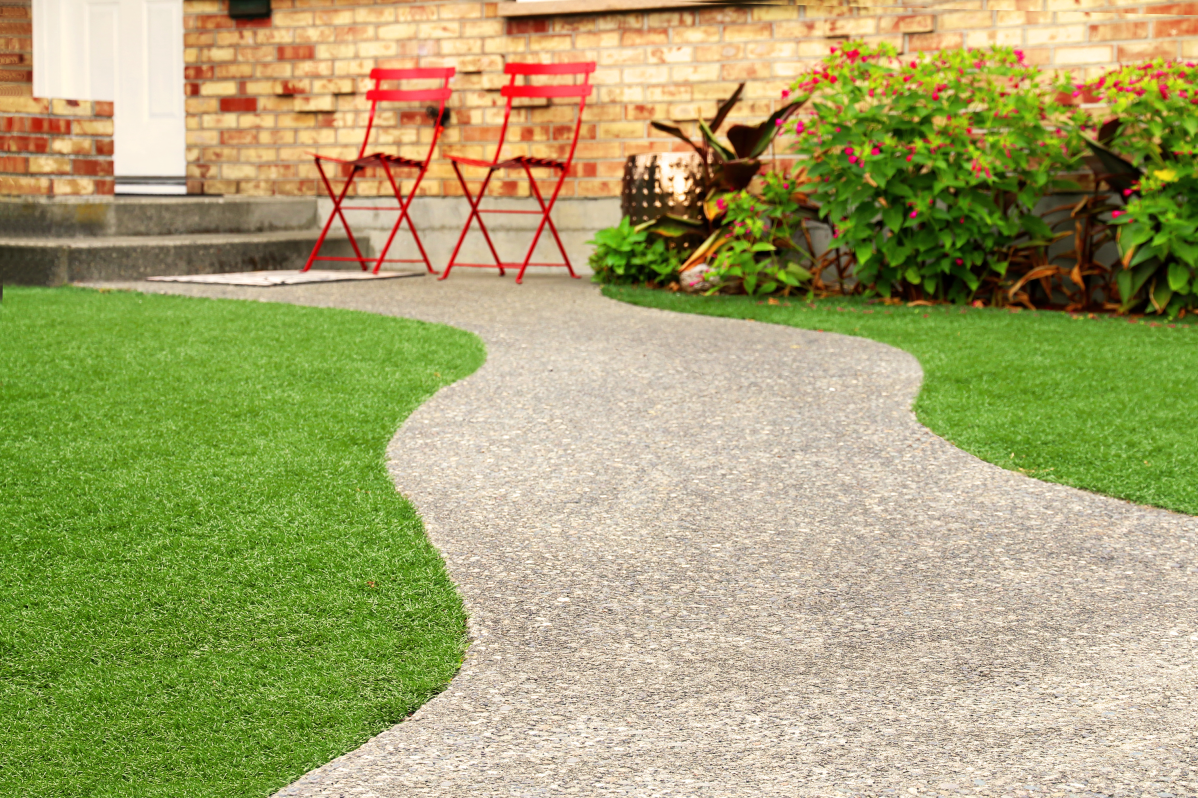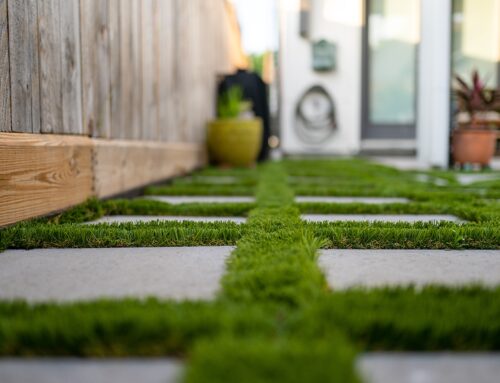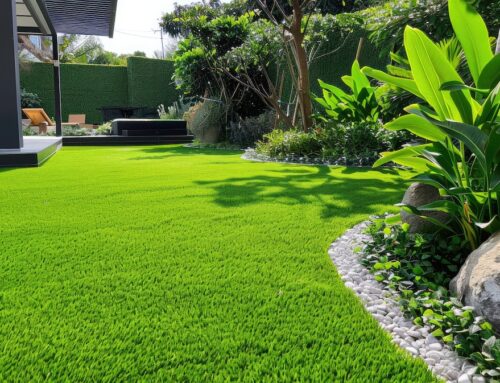Last Updated on February 17, 2022 by ReTurf
In an effort to save water, deal with dying lawns in harsh climates, and the ease of synthetic grass lawn care – many are turning to the idea of going artificial in their yard spaces. Let’s look at some of the material needs and processes required to get the job done.
The Planning Phase
There are a few factors to consider when planning to transition your yard to synthetic grass. Of course, it all starts with measuring the area. This will tell you the amount of synthetic grass you are looking for for your project. You should be mindful to include some extra for mistakes, odd curves, and unexpected circumstances.
The surface itself is the next consideration. There are some questions you will need to answer in order to best move forward.
Some of these are:
- Is the ground level?
- Are there drainage issues?
- Is there hard to remove roots, rocks, or debris?
- Is the area prone to flooding?
Level ground is best, but if dealing with slopes and hills you will need to plan for how the water will drain away from structures. You will also not want water to stand, or puddle up, on top of the turf. Regardless of the circumstance, there are solutions. These can include drainage layers underneath the turf, drainage pipe systems, or grading of the surface area to achieve the desired path for rainwater to flow.
If this starts to get confusing – you can always request some help with us using this form.
Gathering Materials
The materials list goes beyond synthetic grass itself. There are substrate materials, adhesive, lawn staples/nails, infill, and more to consider (depending on your installation needs).
Substrate materials can either be rock layers over natural ground which is embedded below the surface to aid in drainage. Generally, this is made up of 2-3 different materials that are set at such a level that allows the final synthetic grass layer to sit level with the surrounding areas. Or, over a hard surface, such as concrete, you may desire a padding layer for comfort under foot.
If you do have an issue with drainage, drainage pipe systems may be in order.
With adhesives, regular off-the-shelf “liquid nails” type of glue will not do. Synthetic grass requires a specialized form of adhesive developed for this specific task. Gluing may also require a caulking gun, a glue box, and seam tape.
Infill is a crumb rubber or silica sand type of material that is spread over the surface of the synthetic grass. This performs a few functions. These include weighing down the synthetic grass to help protect from wind damage, helps the individual grass blades stand erect, and provides cushioning while walking or playing on the systemic grass surface.
A great way to save money on synthetic grass is to purchase a high-quality recovered product. That is our primary service here at ReTurf and we can provide you with a plethora of options. Pictured below is what we would refer to as “game marked” or “logo marked” used turf. This makes a great addition to an activity area but is not your only option. All green and high-quality artificial turf that has been recovered are other money-saving options that we offer – for that green lawn look.
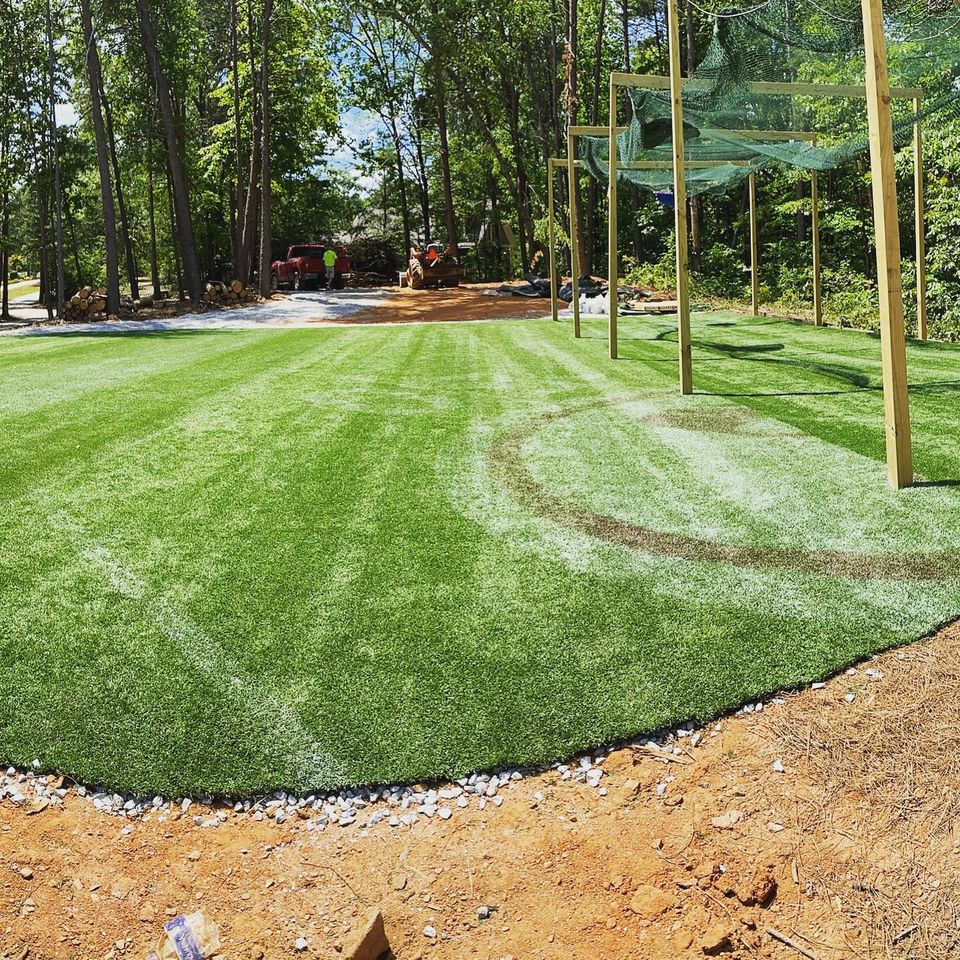
An example of a used synthetic grass area with materials recovered from a sports field.
Preparation & Installation
Depending on the project area size the preparation and installation process can involve everything from just good ol’ elbow grease and a friend or two to full-blown heavy equipment for grading and drainage system installation with the help of a professional contractor.
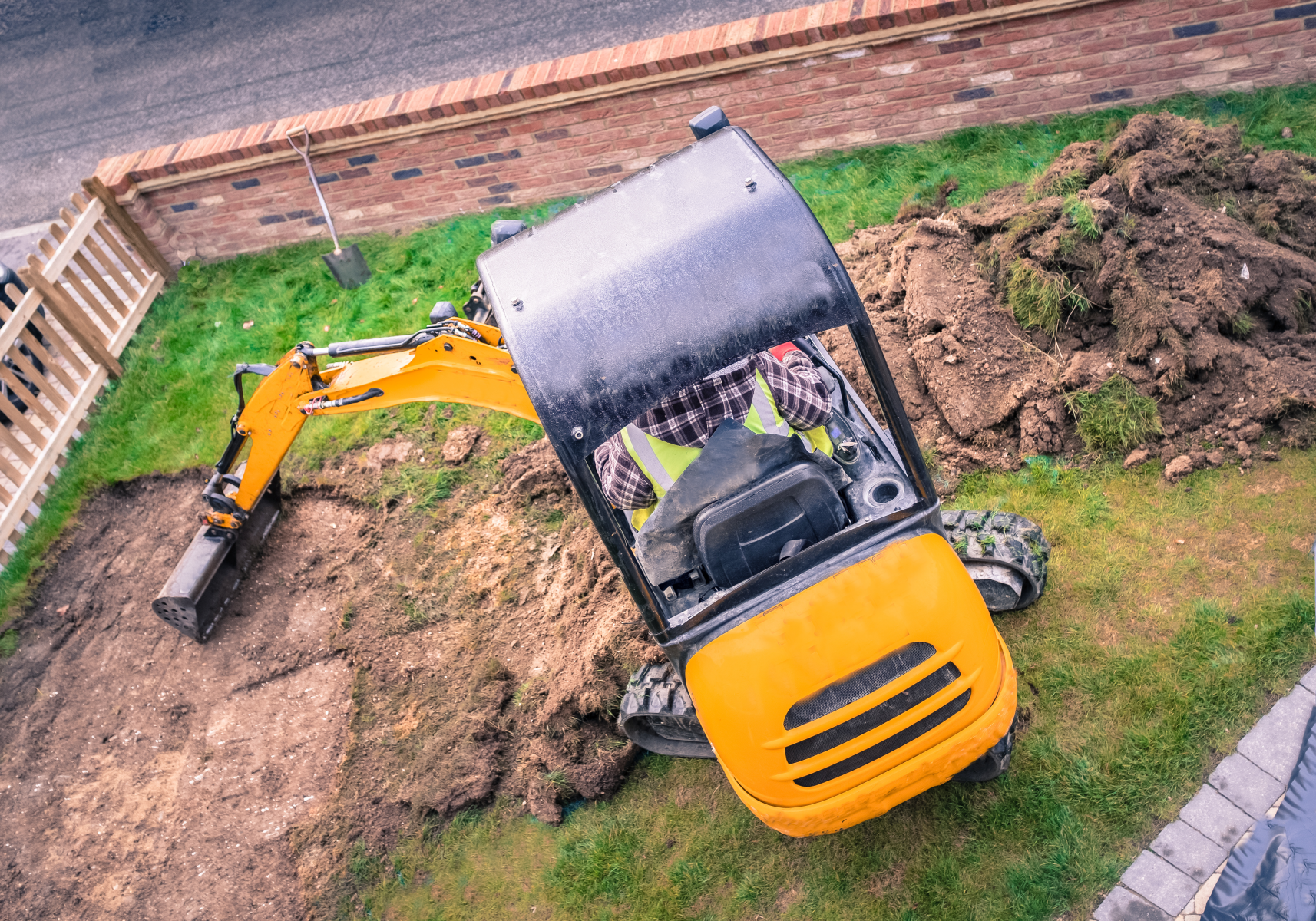
Again, we can help make these decisions with you and make the entire process much easier to understand by contacting us.
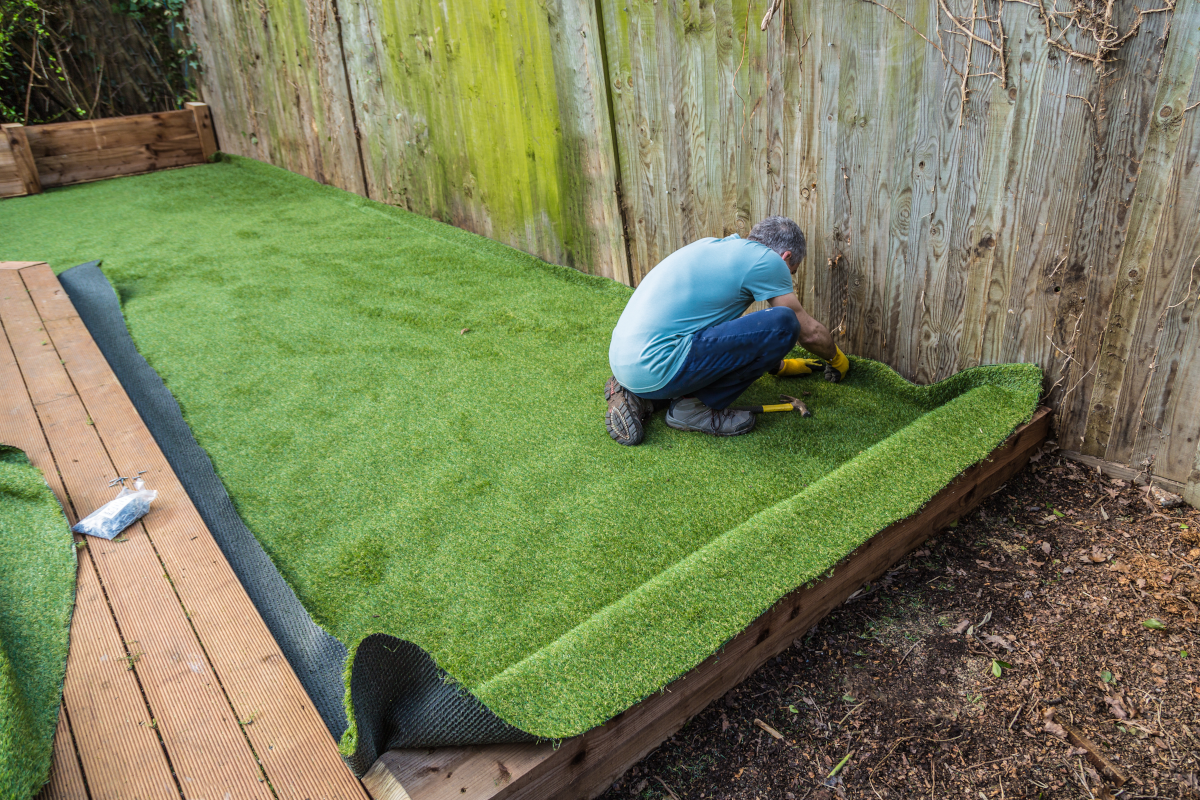
Care
Alongside the long-term return of synthetic lawns through the reduction of water usage, reseeding and sodding, chemical products (such as fertilizer and insecticides), and the plethora of other natural lawn maintenance items – long-term care is fairly simple and straightforward.
Care items include removing large debris from the surface, fallen leaves for instance. This can be done with a broom or a blower.
Simply hose down the turf, and the occasional light detergent washing.
Picking up and hosing down areas with pet waste. (If you are using the artificial turf area for pets, due account for your area and the amount of sun you get. Synthetic grass can get hot and affect your pet’s feet – as long as there is plenty of shade, rover will usually find his way around to the most comfortable areas – if heat is indeed an issue).
Further Reading:

